Transplanting and tomato recommendations [Esp/Eng]
Hello friends, I hope you are doing well. I am, and I have taken advantage of the little winter time left to continue planting some vegetables and greens.
In this case, we decided to plant tomatoes, among other things, because we were told that this kind, called Santa Clara tomato, which is very different from the pear type, which is oval and long, this one is a little rounder and bigger.
So, after about 3 weeks, this is what our plants looked like after planting.
These plants already had a little more than 15 centimeters, which is the recommendation for transplanting this type of plants.
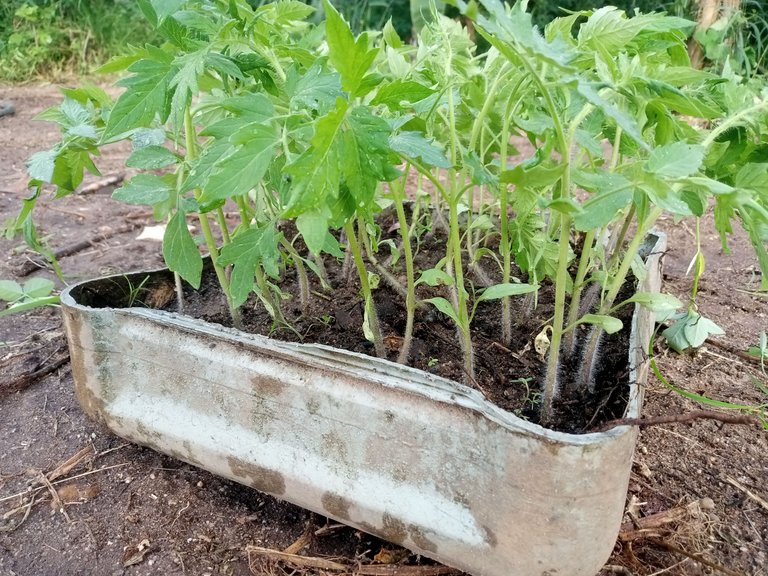
For seedlings to look healthy, it is always good and necessary to have a substrate.
For example, I can recommend that, in addition to the earth, we can grind some eggshells, some banana shells, these, in addition to the earth, provide calcium, and a little phosphorus, which allow the roots of the seedlings can develop in the best way and thus, at the time of transplantation, can grow healthy and strong.
On the other hand, I added some liquid worm humus, which I added every 4 days, in a sprinkler.
1 liter of water x 100 milliliters of humus.

This is a space of land that my dad and I picked out. We had planted there before, but had let it rest until now.
Personally, I like to wet the soil a lot so that it is a little moist, and when I plant, the warmth of the soil, does not damage the plants and cause them stress, which then affects the plant.

There was something that struck me as very strange, and I think this is the second time it has happened to me. As you see in the following image, this seedling has a malformation, which I do not know what caused it, since it does not have the guide, which subsequently makes it grow well.
The first time it happened to me, I let the plant grow, but it did not reproduce or anything, so if anyone knows the reason for this, I thank you to help me. It was just this one that grew like this though.
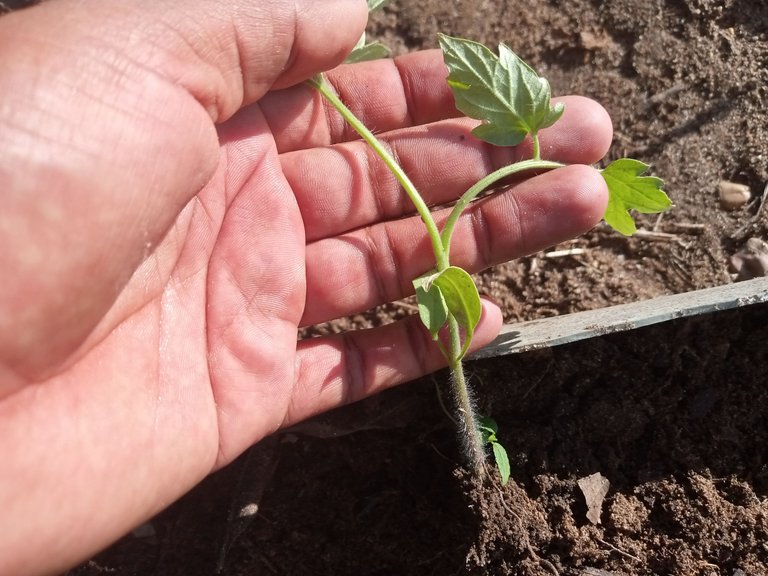
Here you can see that each plant, I planted 35 centimeters apart, while 45 centimeters apart between rows.
This allows a better care of the plants between them, in addition to a better reproduction of the plants, so that the roots and leaves can grow and have a better flowering, and can take advantage of the sun in the best way.
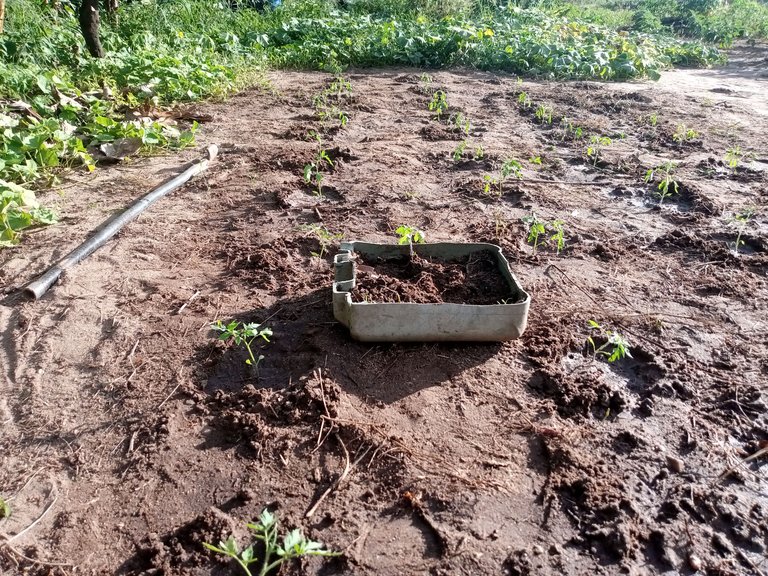
After having transplanted it, I like to water it a little more, all so that the roots are better adapted to the new space in which they are.
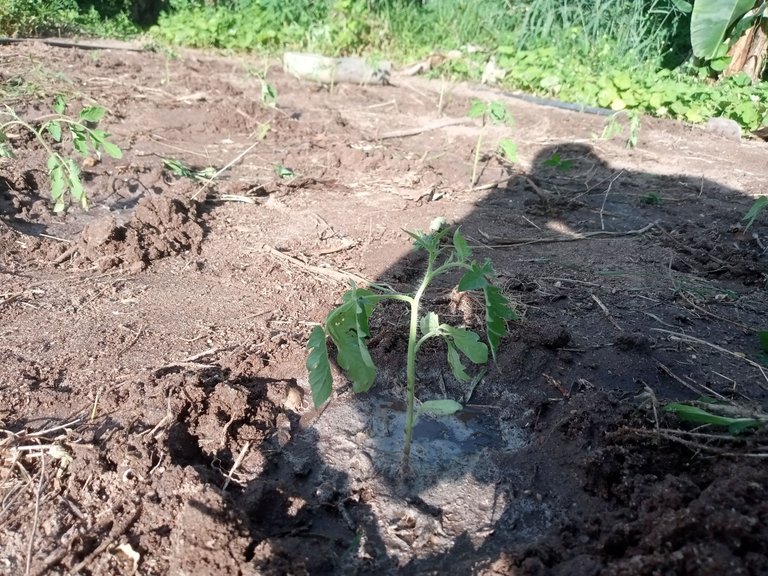
What do you think of these beautiful seedlings? As you can see, the stem has a beautiful brown color, which makes it very appropriate and shows that the plants are in very good condition and very healthy.
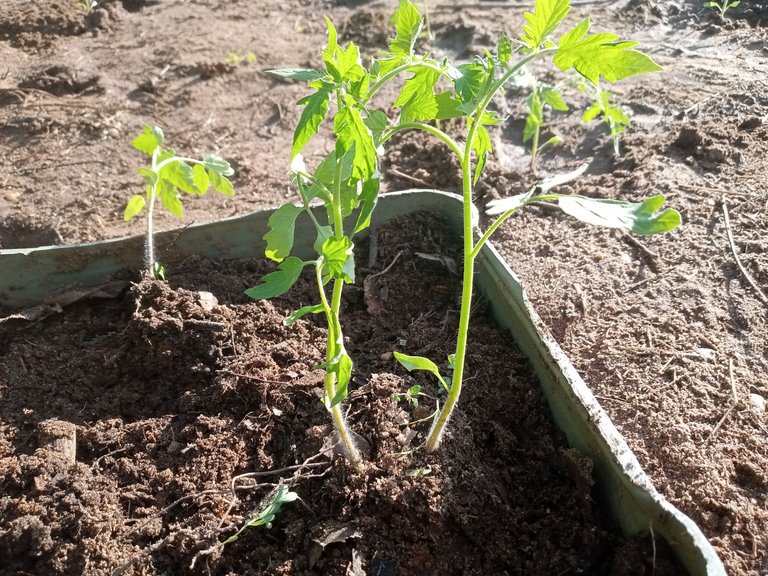
Well, in the end, a total of 35 seedlings, ready and waiting that in about 45 days we start harvesting. But in the meantime, for sure I will show you how they are progressing, and also, some things we are going to do in order to make them grow better.
Transplanting recommendations.
- 15 to 20 cm plant size
- To transplant in the afternoon, so that it does not suffer due to the heat.
- Water after transplanting.
I send you my best regards.
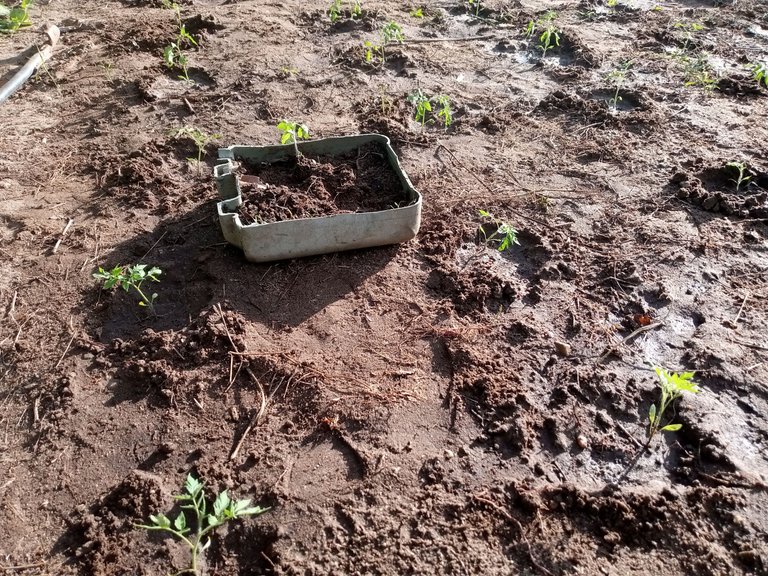
Versión en español
¡Hola amigos espero que estén muy bien!. Yo lo estoy, y he aprovechado el poco tiempo de invierno que queda para seguir sembrando algunas hortalizas y vegetales.
En este caso, decidimos sembrar tomates, entre otras cosas, porque nos dijeron que esta clase, llamada tomate Santa Clara, que es muy diferente al tipo pera, que tiene forma ovalada y larga, este es un poco mas redondo y mas grandes.
Entonces, después de unas 3 semanas, así se veían nuestras plantas a sembrar.
Estas plantas ya tenía un poco más de 15 centímetros, lo cual es la recomendación para hacer el trasplante de este tipo de plantas.

Para que las plántulas se vean sanas, siempre es bueno y necesario tener un sustrato.
Por ejemplo, les puedo recomendar que, además de la tierra, podemos moles algunas cáscaras de huevo, unas cascaras de plátanos, Estos, además de la tierra, le proporcionan calcio, y un poco de fosforo, que permiten que las raíces de las plántulas puedan desarrollarse de la mejor manera y así, a la hora del trasplante, pueda crecer sana y fuerte.
Por otro lado, le agregue un poco de humus de lombriz líquido, el cual le agregué cada 4 días, en un aspersor.
1 litro de agua x 100 mililitros de humus.

Este es un espacio de tierra que mi papá y yo escogimos. Ya antes habíamos sembrado allí, pero la habíamos dejado descansar hasta ahora.
En lo personal, me gusta mojar mucho la tierra para que esté un poco húmeda, y cuando siembre, lo caliente de la tierra, no maltrate y no les cause el estrés, que luego afecte a la planta.

Hubo algo que me pareció muy extraño, y creo que es la segunda vez que me sucede. Como ven en la siguiente imagen, esta plántula tiene una malformación, la cual no se a que debe, o que lo provocó, ya que no tiene la guía, que posteriormente hace que crezca que esta crezca bien.
La primera vez que me sucedió, deje que la planta creciera, pero esta no se reprodujo ni nada, así que si alguien sabe el porqué de esto, les agradezco que me ayude. Aunque fue solo esta la creció así.

Acá pueden observar que cada planta, la sembré a 35 centímetros de separación entre sí, mientras que 45 centímetros de separación entre hiladas.
Esto permite un mayor cuidado de las plantas entre sí, además de una mejor reproducción de las plantas, para que las raíces y las hojas puedan crecer y tener una mejor floración, y puedan aprovechar el sol de la mejor forma.

Luego de haberla trasplantado, me gusta regarla un poco más, todo para que las raíces se adecuen mejor al nuevo espacio en el que están.

¿Qué les parece estas hermosa plántulas? Como pueden observar, el tallo tiene un hermoso color marrón, lo que hace que sea algo muy apropiado y deja ver que las plantas están en muy buen estado y además, muy sanas.

Bien, al final, un total de 35 plántulas, listas y esperando que en unos 45 días comencemos a cosechar. Pero mientras, seguros les mostraré como va el avance de estás, y además, algunas cosas que vamos a hacer con el fin de que estas crezcan mejor.
Recomendaciones para el trasplante.
- 15 o 20 cm de tamaño de la planta
- Trasplantar por la tarde, para que no sufra debido al calor.
- Regar posteriormente al trasplante.
Les envió un grato saludo.

Ismael D. Rodríguez
Discord ismaelrd04#9345
Gracias a estos Testigos por hacer de Hive, el mejor lugar en todo lugar: @guiltyparties @enginewitty @thealliance @c0ff33a



